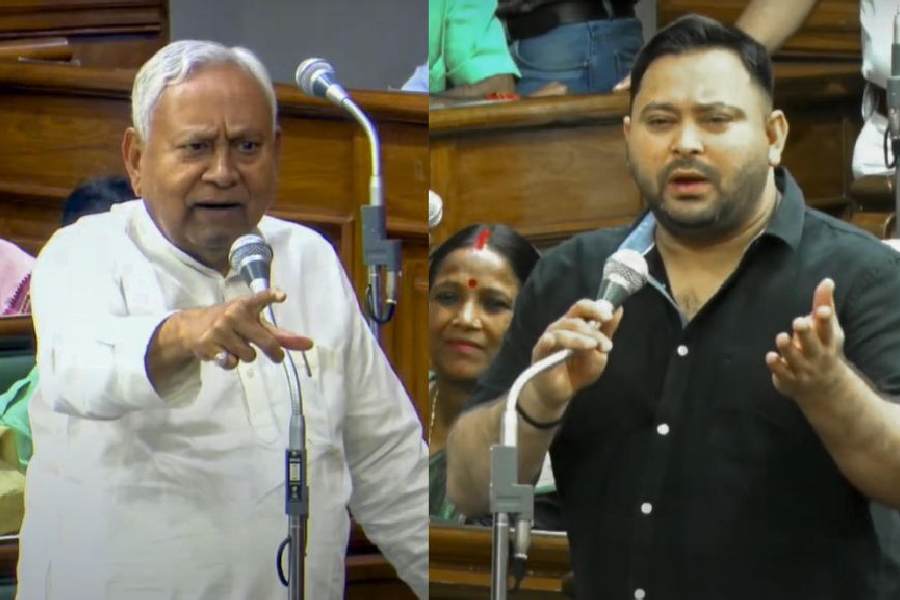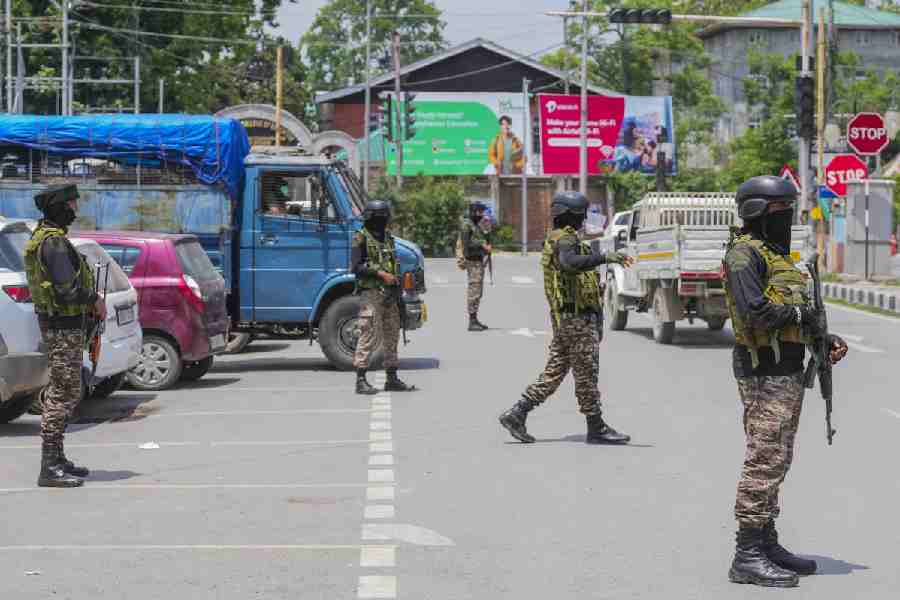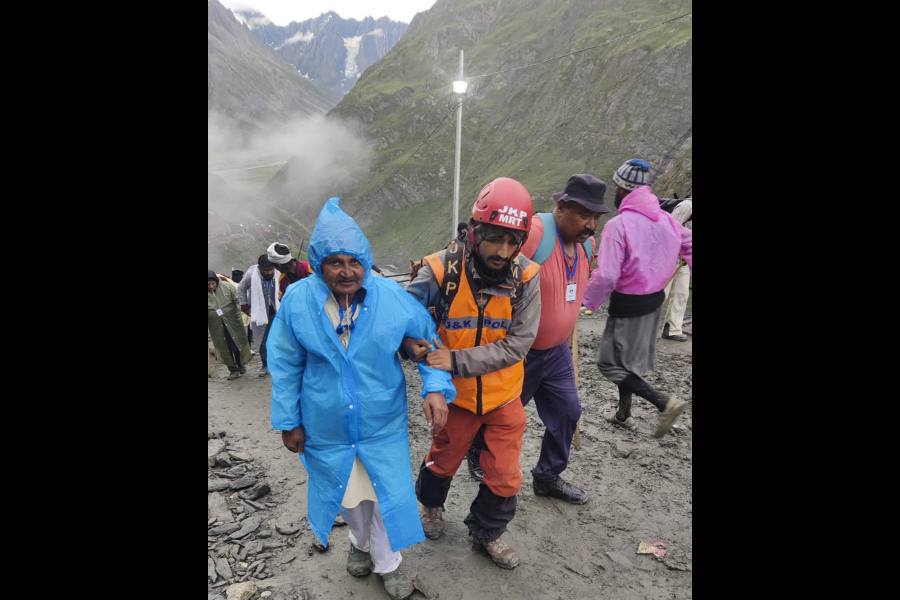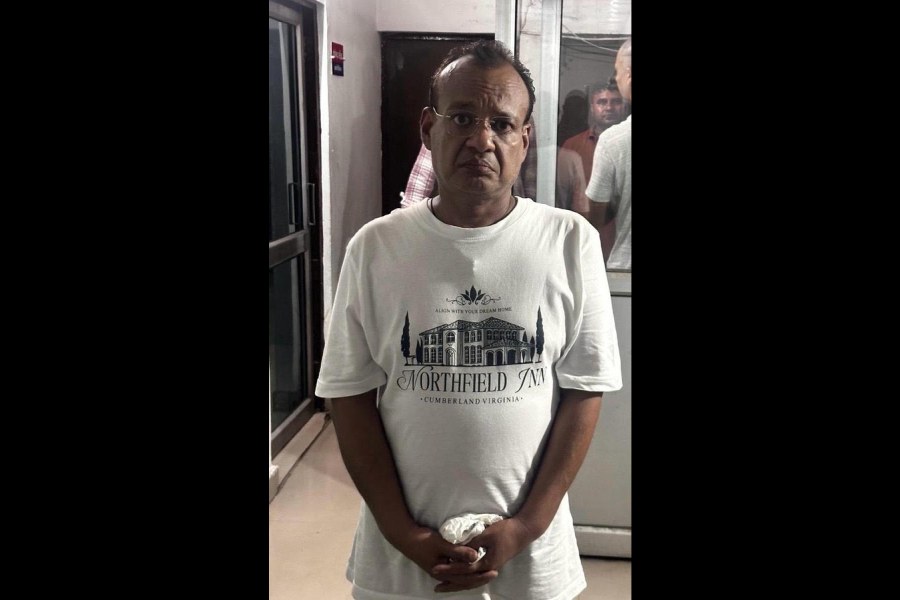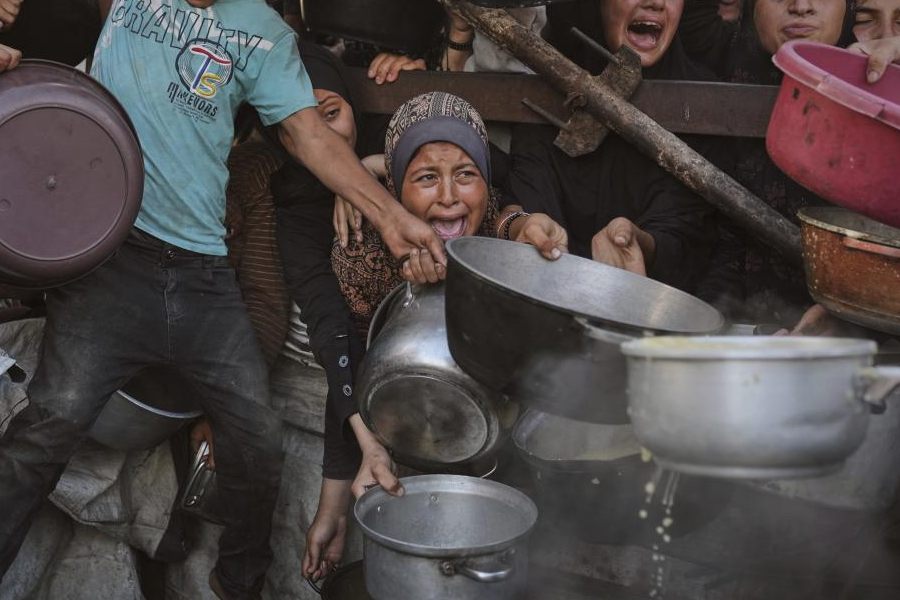
Unlike many of his contemporaries, Indrapramit Roy has remained loyal to the basic brush - albeit of various sizes - and paint pot as worthy vehicles of artistic expression. He paints watercolours with great aplomb, but the effects that he produces with this medium - he is in perfect control of it - are often akin to those of photography. As in the latter medium, light - diffuse, sharply focused and bright or twinkling like the little star of the popular English lullaby - is the font of creativity. But where there is light, there is bound to be shadow, and Indrapramit Roy's paintings conjure up a magical world of reflections and illusions, where one embarks on the quest of reality, but one loses track of it in a maze of likenesses, simulations and mirages.
As in his earlier exhibition, Liminal Zone, at Galerie 88, Roy, an artist and teacher based at MS University of Baroda, returns to a familiar yet dramatic world, where even the surroundings that we are used to can be seen in a different light (quite literally) in the darkness. In his current exhibition, Mezzaterra, at the same gallery till December 12, Roy, who is originally from Calcutta, and was trained at Santiniketan, makes quite obvious references to the world of theatre, and that other Tagore whose paintings often evoked a similar twilight world, occasionally hinting at Cubist angularities in a very personal way.
Roy references Gaganendranath Tagore's Cubist paintings and the sets of an iconic production in Indian theatre in a very recognizable way in a particular work where the intricate network of the branches of a tree is reflected on the glass walls of a building (picture). Its interiors are visible through the transparent surface, blurring the line between illusion and reality. The reference to a particular production of a classic Tagore play is expected of Roy, given the close links of his family to group theatre in Calcutta from way back in the 40s. The cubes within cubes that dominate the lower half of this painting remind us of Khaled Choudhury's imaginative set designs for Bohurupee's production of Tagore's Raktakarabi.
The multi-level linear constructs as in the set (actually the shadows of buildings on the opposite side) commingle with the reflections of the forked arms of a tree on the reflective façade of another new glass tower to create an aura of mystery that can be quite unsettling. This is a common enough sight in all Indian cities of today, and Roy invests it with new meaning as he captures the image, as if with a camera, at a moment in which it acquires an unfamiliar air. This is like catching a glimpse of oneself in a mirror in a dark room and wondering for a few terrifying moments who is staring back at oneself. There is nothing terrifying about Roy's paintings, but when something one takes for granted reveals a different side to its character, things may take an unnerving turn.
As the artist explains in the catalogue, "Mezzaterra could either mean middle ground or common ground. I prefer common ground. It is an imagined territory, an idea, but a very real and pervasive one... where identities are malleable and overlapping and not clear cut and well defined..." But however thought-provoking his works may be, Roy had already explored some of these ideas at his earlier exhibition at the same venue.
This limitation notwithstanding there are some remarkable works. There are some beautiful paintings of scintillating lights - sometimes endless chains of them - strung across streets, hanging from a chandelier, defining the ripples in a pond. Again the camera comes to mind, particularly the digital kind, as it is easy enough to capture with these devices such images of blobs of light at the intermediate moment before they either sharpen into points of light or dissolve into nothingness.
Roy, it seems from this exhibition, is interested in discovering the abstract forms underlying familiar enough scenes, be it tangled branches, the maze of low-rise buildings in a desert town, or the rows of rectangles of which a deserted mall is composed. It can take a decorative turn as Roy paints the whorls of water in a stream. These spiralling shapes, which could have been inspired by designs of kimonos reflecting an art deco aesthetic, are impressed upon the visions of hot, sepia-tinted Siena, be they the horizontal panels or the larger, squarish ones. Surely, the artist had superimposition of images (as in a photograph) in mind when he composed these paintings.





